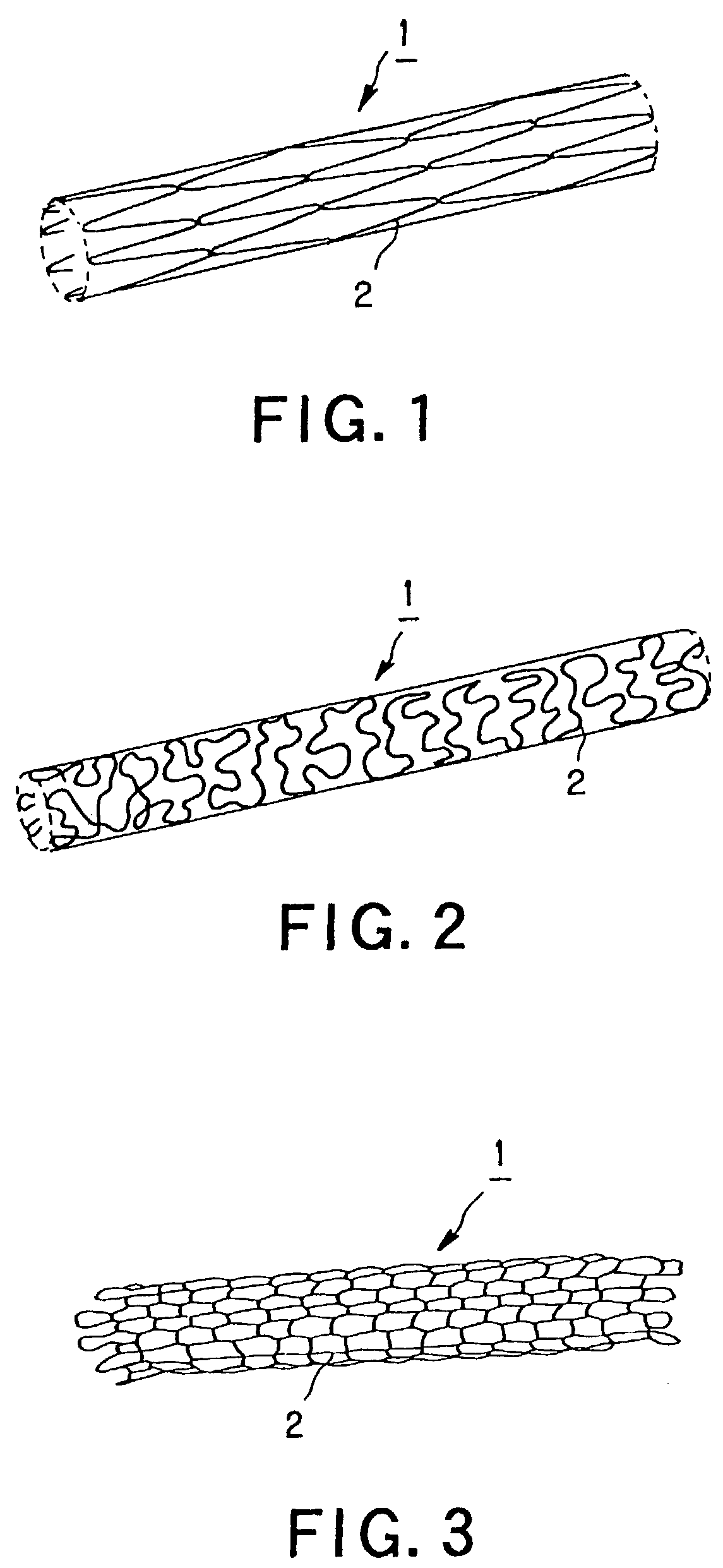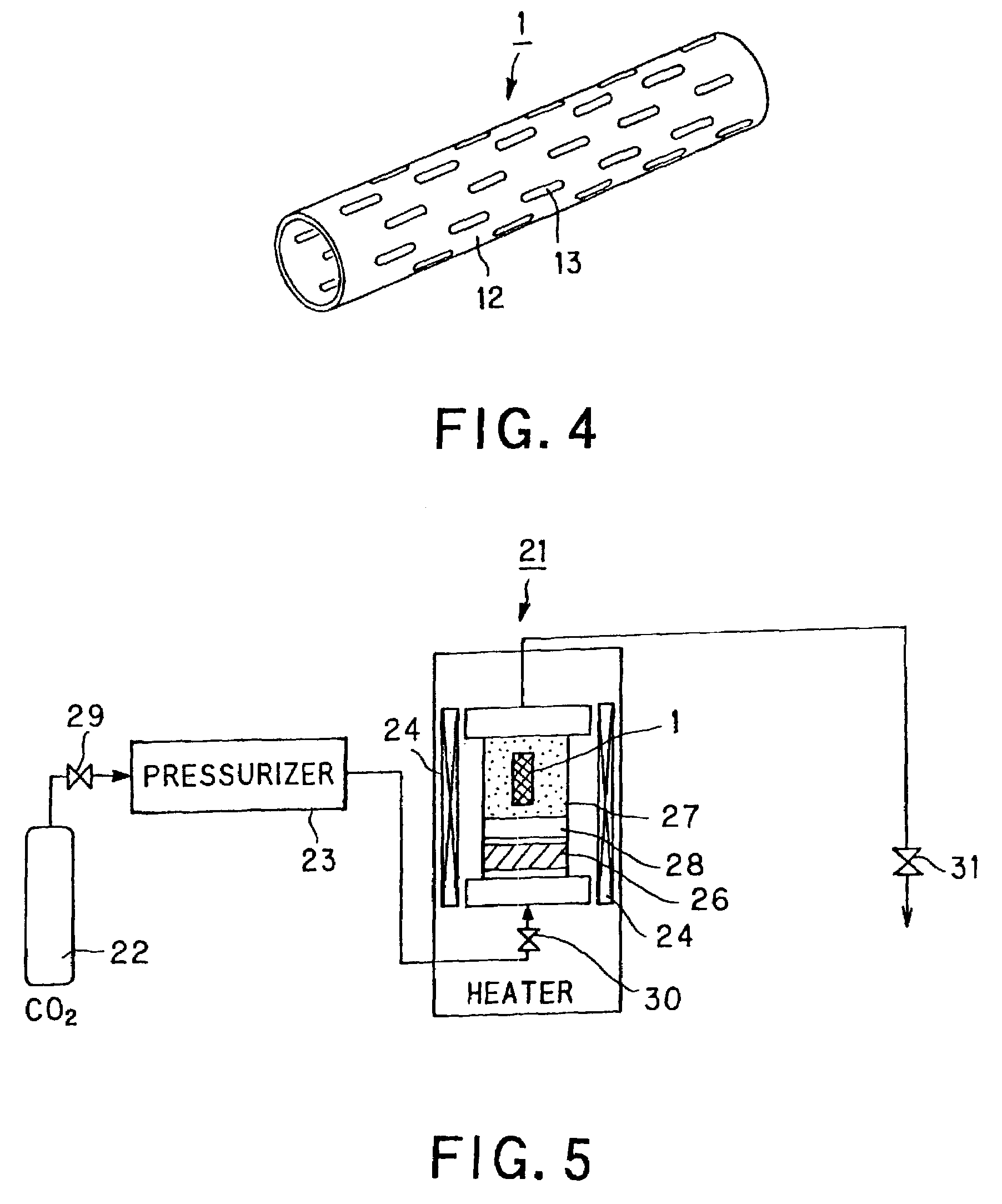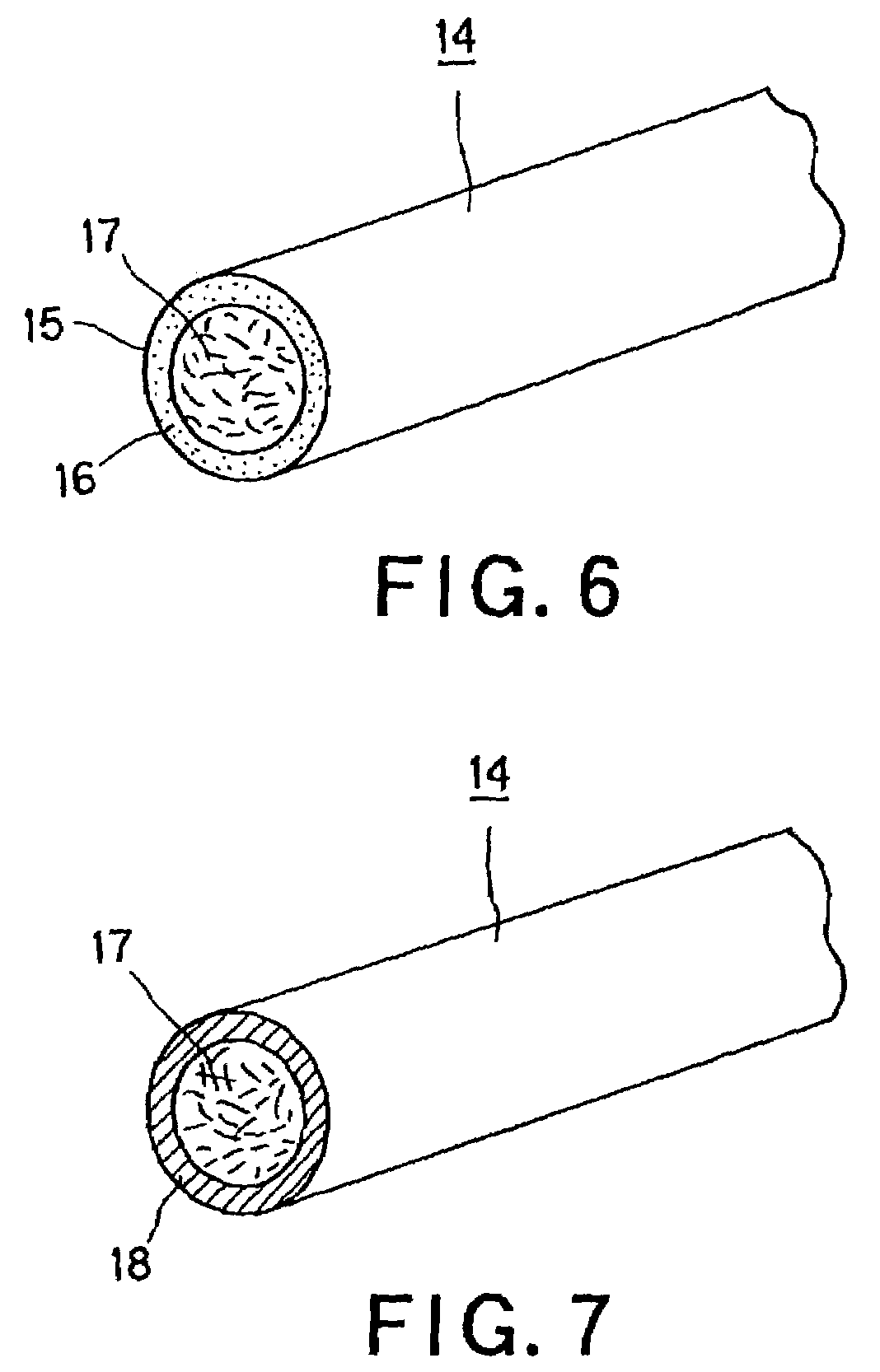Stent for blood vessel and material for stent for blood vessel
a technology for stents and blood vessels, applied in the field ofluminal stents, can solve the problems of re-stenosis caused by excessive hyperplasia, affecting the effect of stent implantation,
- Summary
- Abstract
- Description
- Claims
- Application Information
AI Technical Summary
Benefits of technology
Problems solved by technology
Method used
Image
Examples
experimental example 1
[0077]In the present experimental example, a plural number of fibers, each impregnated with a drug, were prepared, as the pressure and the temperature of CO2 were changed, and the tensile strength was measured of each PLLA fiber.
example 1
[0078]First, a PLLA fiber 170μm in diameter and tranilast [N-(3,4-dimethoxy cinnamoyl) anthranilic acid], exhibiting intimal hyperplesia suppressing effect, were charged into a pressurized vessel 27 of the device 21 shown in FIG. 5. At this time, a porous filter was inserted into the space between the PLLA monofilament and tranilast. Meanwhile, tranilast is a drug effective in suppressing re-stenosis which occurs after the angioplasty.
[0079]Then, CO2 was pressurized to 10 MPa by a pressurizer 23 and a second valve 30 was opened to inject it into the pressurized vessel 27. CO2 pressurized in the pressurized vessel 27 was warmed to 80° C. to set it to a state of supercritical state fluid.
[0080]After the PLLA fiber and tranilast were exposed to CO2 in the state of the supercritical fluid for two hours, CO2 was gradually exhausted to set a state opened to atmosphere. This yields a tranilast-impregnated PLLA fiber.
experimental example 2
[0091]In the experimental example 2, a plural number of luminal stents, formed of plural biodegradable polymer material, in particular plural fibers of biodegradable polymer, in which the drug was impregnated as the pressure and the temperature of CO2 were varied, were formed, and measurements were made of the amount of the drug for each of these stents.
PUM
| Property | Measurement | Unit |
|---|---|---|
| pressure | aaaaa | aaaaa |
| tensile strength | aaaaa | aaaaa |
| pressure | aaaaa | aaaaa |
Abstract
Description
Claims
Application Information
 Login to View More
Login to View More - R&D
- Intellectual Property
- Life Sciences
- Materials
- Tech Scout
- Unparalleled Data Quality
- Higher Quality Content
- 60% Fewer Hallucinations
Browse by: Latest US Patents, China's latest patents, Technical Efficacy Thesaurus, Application Domain, Technology Topic, Popular Technical Reports.
© 2025 PatSnap. All rights reserved.Legal|Privacy policy|Modern Slavery Act Transparency Statement|Sitemap|About US| Contact US: help@patsnap.com



